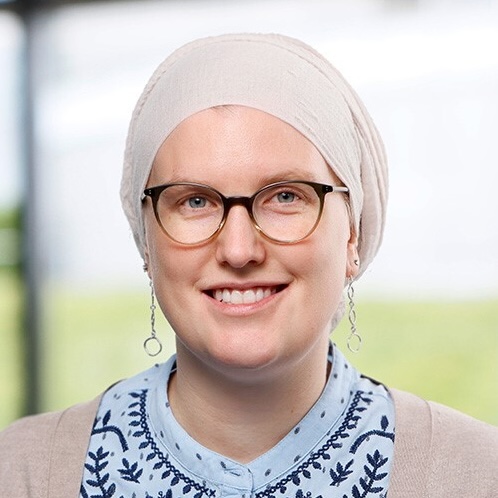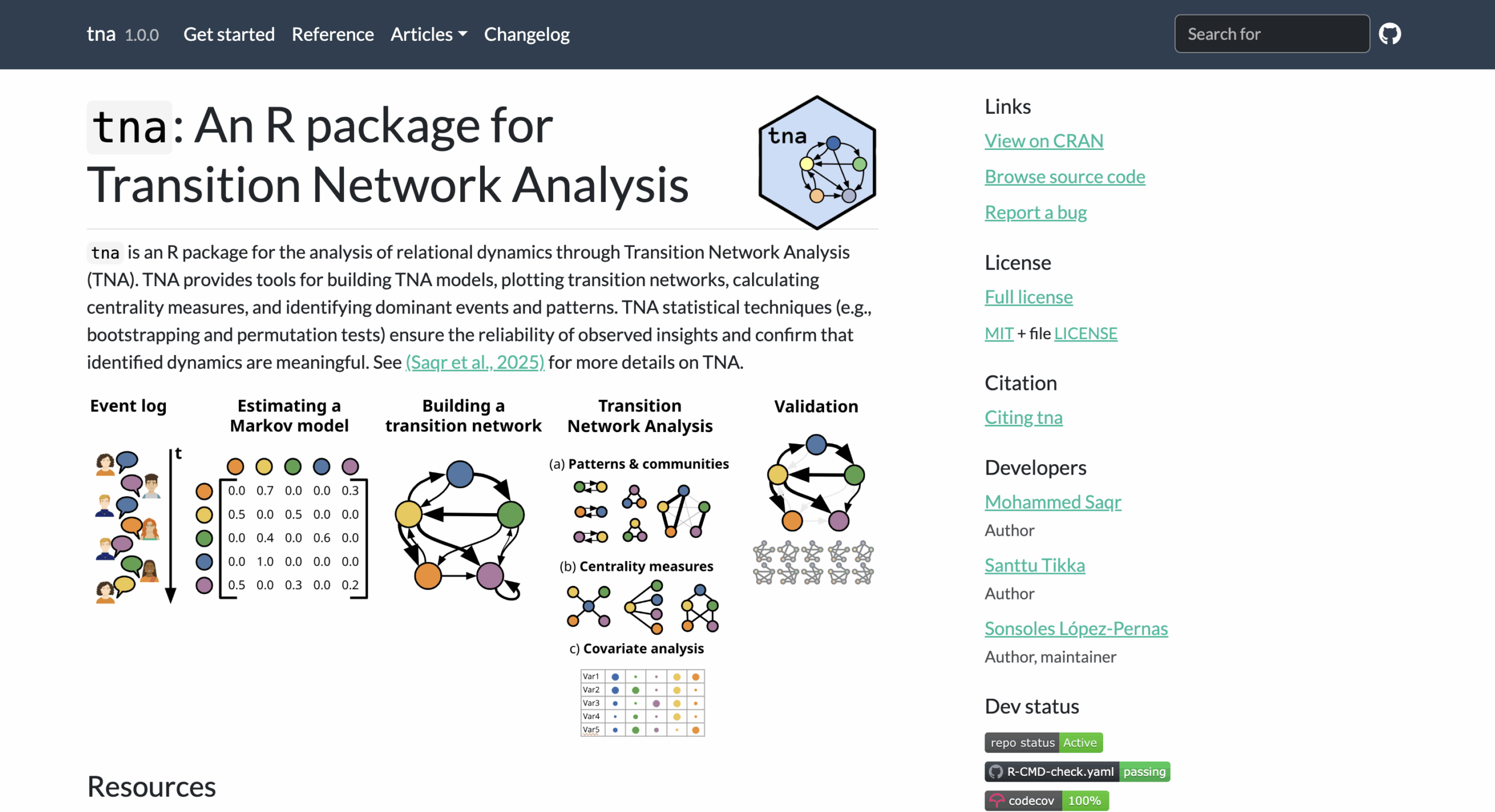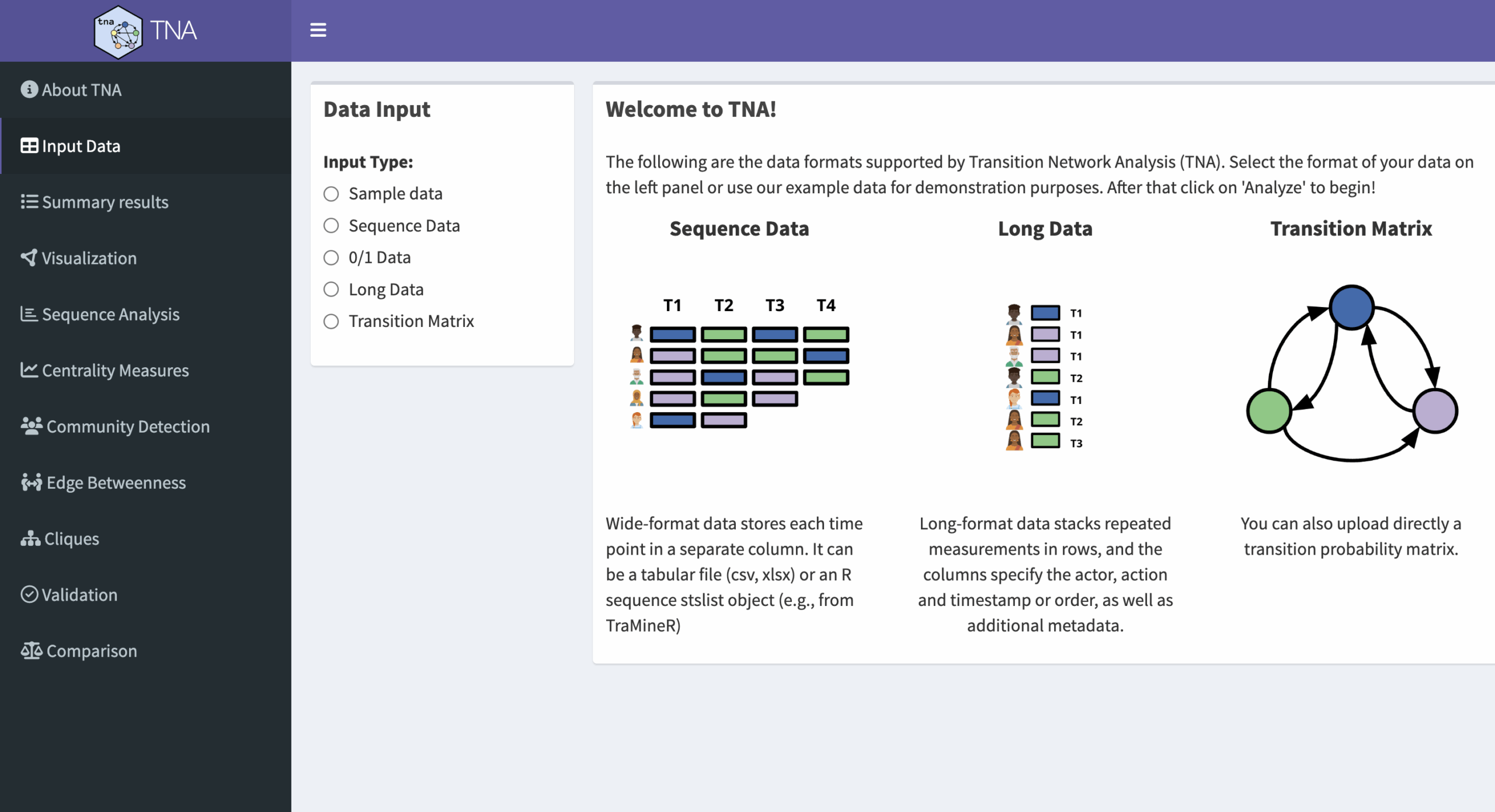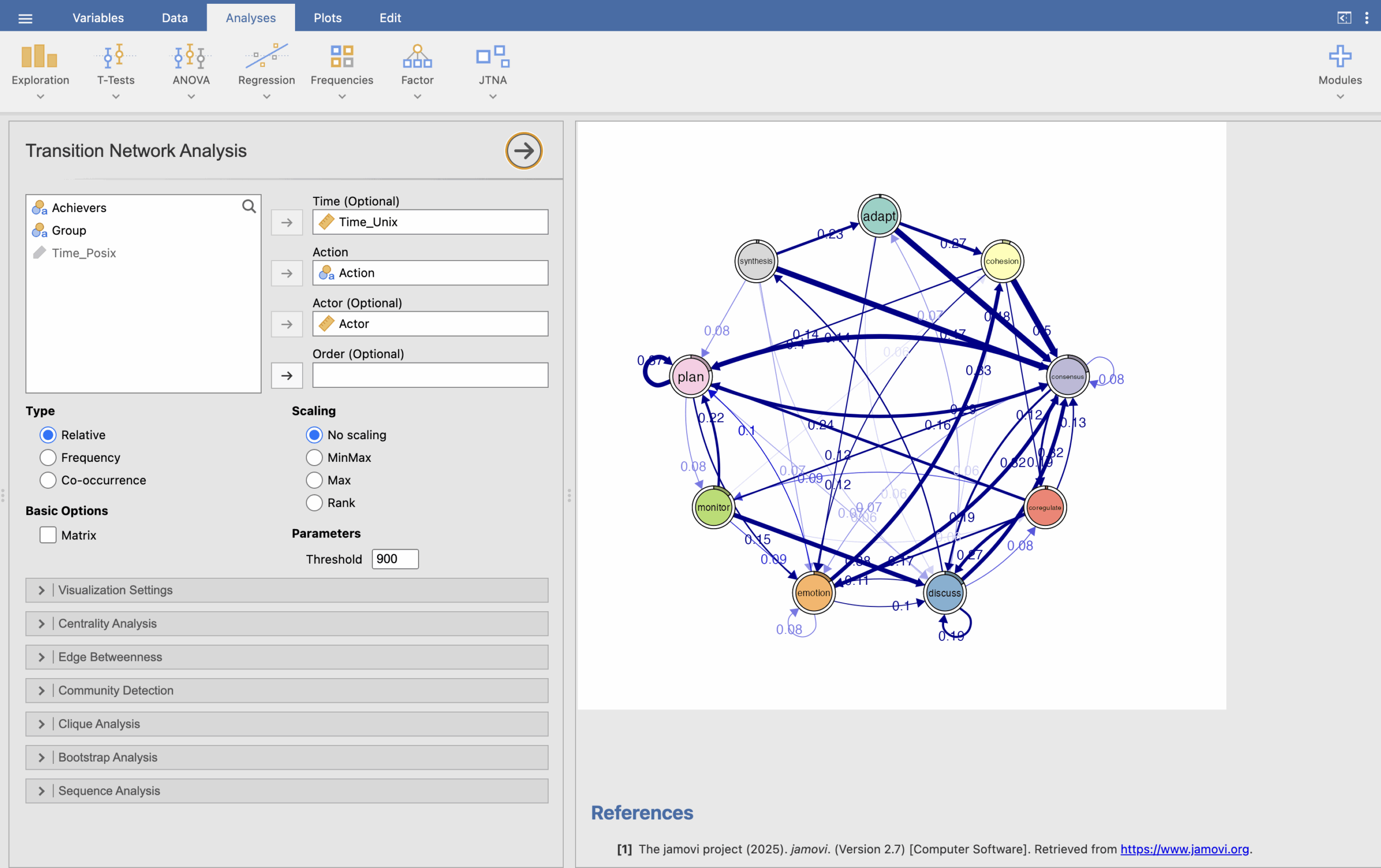Transition Network Analysis Workshop
A Hands-on Tutorial with a Focus on Modeling Human-AI Interaction
co-located with LAK 2026, Bergen, Norway
Our workshop at LAK introduces Transition Network Analysis (TNA), a novel network analysis method that captures the relationships and dynamics of the learning process. The workshop offers attendees the opportunity to understand, learn, practice, and discuss several case studies using real-life data and hands-on experience. The workshop is an excellent opportunity to discuss the opportunities of applying TNA to own data and get their questions answered by the creators of the methods. While the workshop will cover the broad applicability of TNA, the featured case studies will focus on human-AI interaction—an area of growing importance. This is due to the several new methods that TNA introduces specifically to address this area of significance.
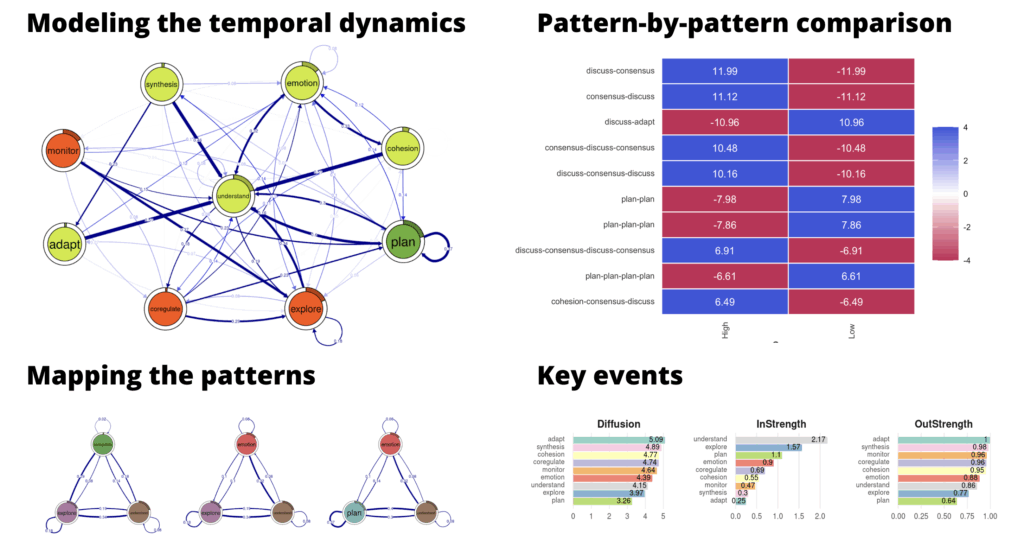
What is TNA?
TNA is a novel framework for modeling the learning process through a rich toolkit of rigorous, statistically validated methods. It provides an accessible yet powerful environment for researchers to perform sophisticated analyses—without requiring coding expertise. TNA supports the computation of metrics at the graph, node, and edge levels, and facilitates the identification of recurring structures such as dyads, triads, communities, and clusters. TNA integrates statistical validation techniques —including bootstrapping, permutation testing, and case-dropping— to assess the robustness and replicability of findings. This allows researchers to statistically validate each edge in the network with both p-values and effect sizes —an unprecedented capability in process modeling. Furthermore, TNA enables comparison across subgroups and the explanation of observed patterns with edge-level statistical significance. By combining network analysis with statistical rigor, TNA supports theory development and hypothesis testing grounded in empirical evidence.
The workshop’s learning objectives include helping participants develop a solid understanding of theoretical foundations and methodological affordances of TNA and its key variants: Frequency-based TNA, Attention Network Analysis, and Co-occurrence TNA. Attendees will learn how to choose appropriate data and research questions for TNA, perform necessary data preprocessing, and apply the method using both point-and-click platforms where no code or programming experience is required (tna-web and JTNA) as well as code-based tools (tna R package).
Key skills in the tutorial include
- Understanding the structure of the data
- Build TNA models
- Network visualization
- Other visualizations: frequencies, mosaic plots, histograms
- Statistical validation: bootstrapping and permutation tests
- Centrality measures: betweenness, diffusion, closeness, degree
- Clique and structural pattern detection
- Community detection
- Sequence analysis and visualization
- Compare learning processes and group analysis
- Group-specific network metrics
Schedule
Our event will be a full-day interactive workshop/tutorial combining lectures, discussions, demos, paper presentations, tutorials, and hands-on practice. The proposed schedule is detailed below:
9:00 – 9:15 Welcome & Workshop overview
9:15 – 10:00 Introduction to theoretical foundation and use cases in TNA
10:00 – 10:15 Coffee break
10:15 – 10:45 Capturing human-AI dynamics with TNA
10:45 – 12:00 Paper presentations with plenum discussions
12:00 – 13:00 Lunch break
13:00 – 14:00 Interactive demo of TNA Jamovi and TNA R package
14:00 – 14:45 Hands-on TNA and participatory exercises in small groups (I)
14:45 – 15:00 Coffee break
15:00 – 16:00 Hands-on TNA and participatory exercises in small groups (II)
16:00 – 17:00 Closing, reflections, discussions
Call for papers
The presented papers will be published in a volume in CEUR workshop proceedings. We accept empirical, methodological, theoretical, or software/data contributions for this section of the workshop related to the following topics:
- Empirical studies using TNA to analyze learning processes, collaboration, learning activities or event data
- Position papers that address areas of relevance to the temporal dynamics of learning, e.g., discussion, opinion, or theoretical papers that are related to learning transitions, or changes across time.
- Novel methodological developments or extensions of TNA (e.g., Frequency-based TNA, Attention Network Analysis, Co-occurrence TNA).
- Comparative or combined analyses between TNA and other temporal or network-based methods
- Learning theories informed or related to TNA.
- Tool development, visualization techniques, or open datasets for TNA
- Applications of TNA to model human–AI interactions.
Important dates
- Submission Deadline:
4 Dec 202518 Dec 2025 - Notification of Acceptance:
19 Dec 20254 Jan 2026 - Deadline for camera-ready: 12 Jan 2026
- Workshop celebration at LAK 2026: 27 Apr 2026
Submission guidelines
Submissions should be anonymized and follow the CEUR Workshop Proceedings template and be submitted through EasyChair. Each paper will be double-blind peer-reviewed. Accepted papers will be presented during the workshop and published in the CEUR Workshop Proceedings (open access). We accept regular papers (10+ pages), short papers (5-9 pages), and work in progress (5-9 pages).
🔗 Submission link: https://easychair.org/conferences?conf=tna26
Get started with TNA!
To help you prepare your contribution, we have put together a series of resources
Our tools
Tutorials
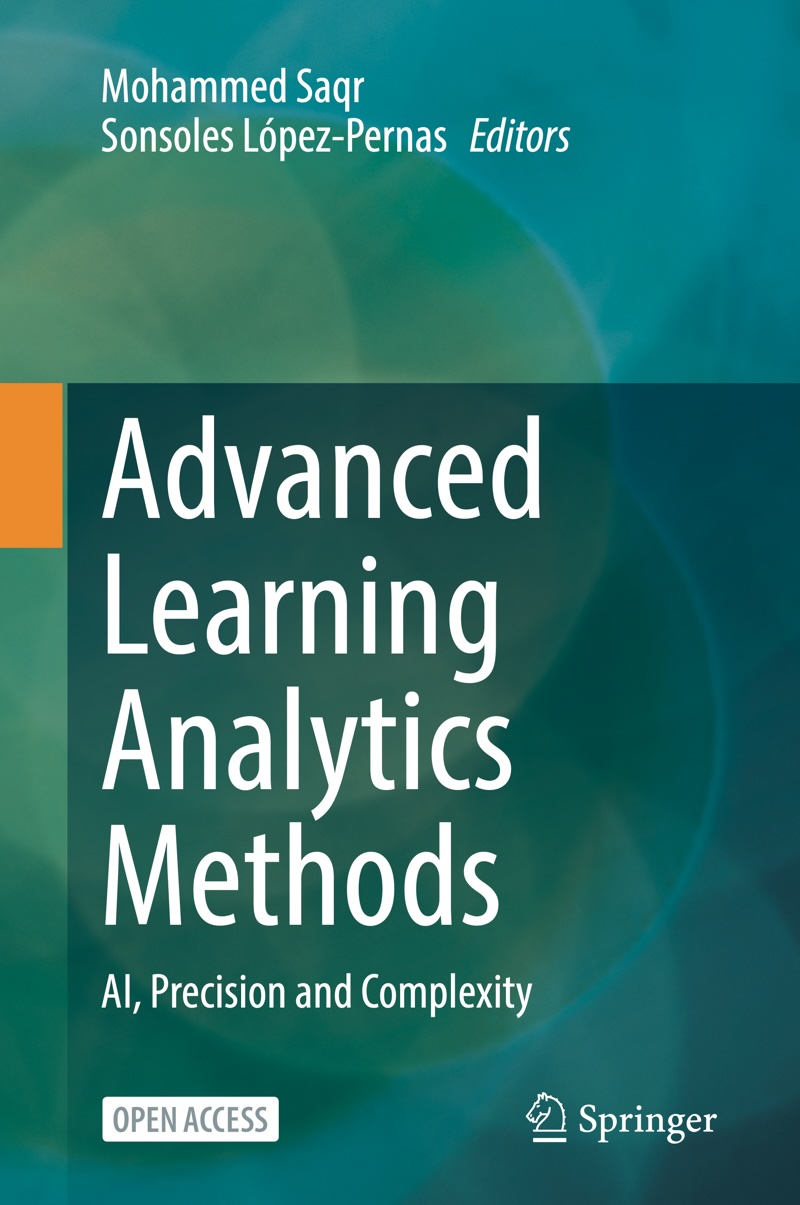 There are three tutorials available about TNA:
There are three tutorials available about TNA:
- Basic tutorial: Mohammed Saqr, Sonsoles López-Pernas, Santtu Tikka (2025). Mapping Relational Dynamics with Transition Network Analysis: A Primer and Tutorial. In M. Saqr & S. López-Pernas (Eds.), Advanced Learning Analytics Methods: AI, Precision and Complexity (in – press). Springer. https://lamethods.org/book2/chapters/ch15-tna/ch15-tna.html
- Frequency-based TNA: Mohammed Saqr, Sonsoles López-Pernas, Santtu Tikka (2025). Capturing The Breadth and Dynamics of the Temporal Processes with Frequency Transition Network Analysis: A Primer and Tutorial. In M. Saqr & S. López-Pernas (Eds.), Advanced Learning Analytics Methods: AI, Precision and Complexity (in – press). Springer. https://lamethods.org/book2/chapters/ch16-ftna/ch16-ftna.html
- Clustering: Sonsoles López-Pernas, Santtu Tikka, Mohammed Saqr (2025). Mining Patterns and Clusters with Transition Network Analysis: A Heterogeneity Approach. In M. Saqr & S. López-Pernas (Eds.), Advanced Learning Analytics Methods: AI, Precision and Complexity (in – press). Springer. https://lamethods.org/book2/chapters/ch17-tna-clusters/ch17-tna-clusters.html

